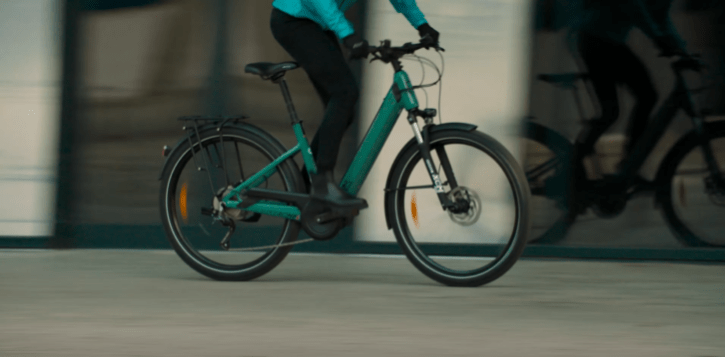

With so many road bike tires available, this guide will help you sort through the main brands including Continental, Hutchinson, Michelin, Schwalbe, and Vittoria. I’ve selected two tire models per brand to simplify your search, and these models are not tubular. (I’ll cover tubular tires in another guide.)
Choosing the right tire can be complex, as your needs will differ depending on whether you’re looking for performance or comfort, racing or cycling. It can also be difficult to compare tires from different brands. To make this process easier, I’ve taken user feedback from specialized sales sites into account when selecting these models.
At the end of each article, you can compare the two models of the same brand for a 25mm section. Some models even come in colors other than the standard black.


Before delving into the technical specifications of a road bike tire, it is important to have a general understanding of its main characteristics.
Puncture-resistant tires are designed to resist punctures through their thicker and more durable material compared to standard tires, but they are not completely indestructible. They can still be punctured by sharp debris like glass or nails, but they may be able to get you home without having to stop on the roadside to fix a flat tire.
While some cyclists prefer to carry a new inner tube with them, it is also recommended to bring patches or a puncture spray just in case. On the other hand, puncture-proof tires are designed to resist 99% of the debris on the road, making it possible to ride without carrying a patch kit.
While puncture-proof tires have very resistant rubber, they can be heavier than conventional tires due to their thicker and more rigid structure. This added weight may be a drawback for some cyclists.
We’ll take a closer look at one of the benchmarks of puncture-proof tires, the Schwalbe Marathon Plus, later in the article.
TPI refers to the number of threads in a tire within an inch. It determines the density of threads for a tire.
The higher the TPI value, the better the quality of the tire, and the more flexible it becomes, leading to an increase in tire efficiency. A high-quality tire can also reduce fatigue while riding, though it may cost more.
While 100 TPI is a good value for road tires, there are some excellent and particularly resistant tires with a TPI slightly below 100, as detailed in this guide.
Some tires may be advertised with a TPI of 330, but it is actually three layers of 110.
Tire pressure is also important as it determines the grip of the tire. Riding with underinflated tires can lead to less traction and a higher risk of slipping in turns.
It is important not to ride with a flat bicycle tire as it can damage both the tire and inner tube.
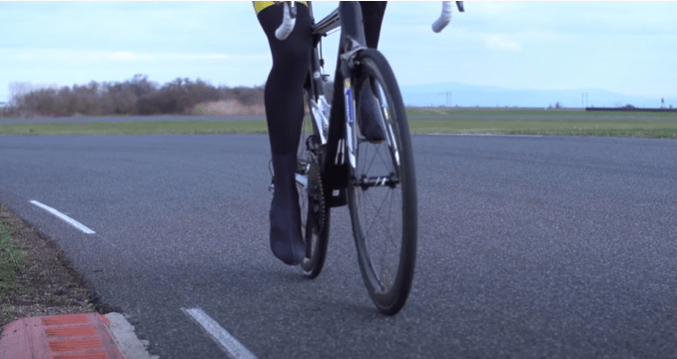

The amount of air pressure in your road bike tire determines its grip on the road. The tire manufacturer specifies the optimum pressure range based on their tests and specifications during tire construction.
Under-inflation or under-pressure occurs when the tire is not adequately inflated. This makes the bike feel sluggish and unresponsive, with reduced grip on the road. The bike slows down faster than usual, and the risk of a puncture increases because the tire crashes onto the road.
Overinflated tires lack comfort because they do not absorb road imperfections. The bike vibrates a lot and can bounce on cobblestones and other road imperfections, causing you to lose control. The tire’s grip is also reduced since less of its surface area is in contact with the ground.
The usual 10% rule suggests calculating the appropriate pressure based on your weight. For example, if you weigh 72 kgs and the tire has a minimum pressure of 7 bars, you should calculate: 72 * 10% = 7.2. Thus, you should apply approximately 7.2 bars of pressure. However, this rule is only indicative, and it’s better to respect the minimum pressure recommended by the manufacturer.
If you weigh 50 kgs, you should not apply 6 bars of pressure, as shown in the graph. Instead, you should respect the manufacturer’s minimum pressure recommendation but slightly lower the pressure to gain comfort. Test and validate the pressure that suits you best to avoid losing comfort while riding.
The width of your bicycle tire affects several aspects of your ride, including comfort, weight, agility, and yield. Larger tires increase comfort as they can absorb the deformations of the ground. It’s possible to change the tire size within the limits of what your rim and fork can accommodate.
If your bike currently has 23mm tires, you can test a size of 25mm without much concern. Similarly, if your bike has 25mm tires, a size of 28mm can provide even more comfort. Choosing between several sizes offers a wide range of possibilities and allows for more choices when it comes to equipment.
In the past, 23mm (or even 20mm) tires were commonly used, but nowadays, the standard tends towards 25mm and even wider tires due to the rise of city bikes, fixie bikes, and gravel bikes. Riding with a 25mm tire provides the advantage of increased comfort without sacrificing rolling performance, as tests have shown consistent traction on both dry and wet ground.


Determining the exact mileage at which a tire is worn out is not possible as it varies depending on factors such as the type of rubber and the road surface. Tires designed for competitions have a shorter lifespan compared to endurance models.
If the tire is covered in notches or flat spots, or the rubber is damaged, then it’s time to replace the tire.
Many modern tires come with wear indicators, similar to those on cars or motorcycles. When the wear indicator becomes barely visible, it’s time to replace the tire.
The tread of the tire is the part that comes into contact with the road surface and is usually the first area to develop notches and wear over time.
Since the rear tire wears out faster than the front, some cyclists opt to switch the front and rear tires to achieve more even wear.
However, it’s important to be cautious after switching the tires as the front tire may have more wear and tear, which can impact handling and cornering.
When it comes time to replace your worn-out bicycle tires, it’s important to read the technical data printed on the sidewall of the tire. This information can help you choose the right model of tire for your needs, and avoid picking tires that are too wide for your rims.
If you’re not sure which tire model is right for your bike, reading the sidewall can provide you with valuable information to help you make an informed decision. For example, you can choose to stick with the same tire size or opt for a larger tire to improve your riding comfort.
The information on the tire sidewall is typically divided into different sections. Let’s take a look at an example from a VITTORIA Rubino PRO tire:
From this, we learn that the tire is a VITTORIA Rubino PRO, with a size of 700x25C and a width of 25mm. The recommended tire pressure is between 7 and 9 bars.
Here’s another example, this time from an old 1985 road bike fitted with VITTORIA Randonneur tires:
From this, we learn that the tire is a VITTORIA Randonneur, with a size of 700x28C and a width of 28mm. The recommended tire pressure for this model is a maximum of 5.5 bars.
It’s crucial to pay attention to this information, as even tires from the same brand may not accept the same pressure from one model to the next. Proper tire pressure is directly linked to tire grip, wear, and comfort, so it’s essential to follow the manufacturer’s recommendations to get the best performance from your tires.


When it comes to replacing your tires, you may come across different types of models: Tube type, Tubeless Ready, and Tubeless. It can be confusing to know which one has an inner tube and which doesn’t.
Tubetype assembly:
This is the most common type of assembly and is used in a wide variety of bicycles. It has an inner tube that holds the air inside the tire. You can convert a Tubetype rim to a Tubeless Ready rim by adding a special rim tape and a sealed valve. This way, you can ride without an inner tube and experience the benefits of Tubeless technology without having to purchase new rims.
Tubeless Ready Assembly:
This type of assembly is lighter and more affordable than Tubeless. It doesn’t have a double cavity between the spokes and the tire air, which helps save weight. You can choose to use an inner tube or not. However, it is essential to add a preventive liquid to strengthen the seal between the air and the rim tape, and between the tire and the rim.
Tubeless Assembly:
Tubeless tires don’t have an inner tube and are completely waterproof. The rim has lips that hold the tire and a hermetic groove (rim tape) to ensure a tight seal. These tires are more resistant than Tubetype tires and can remain in place without the risk of breaking off. Tubeless assembly is similar to car or motorcycle tires and provides excellent puncture resistance, improved comfort, and performance.
To ensure optimal performance, it’s recommended to add 30-60 ml of a preventive liquid that quickly fills small notches in the tire. This liquid can last for up to 2 years, depending on the brand you choose. It’s not mandatory to add the liquid, but it’s highly recommended to benefit from the self-repairing properties of the tire in case of micro-cuts.
Tubeless assembly was first used in mountain bikes 20 years ago and is now commonly used in competitions due to its increased resistance compared to Tubetype assembly.
The inner tube is a crucial component of the tire. Here’s what you need to know about choosing and maintaining this sensitive component.
Choosing an Inner Tube
Selecting the right inner tube requires considering various factors, including:
Tubeless Assembly:
To replace a punctured inner tube, follow these steps:
By following these steps, you can keep your inner tube in top condition and ensure a smooth ride.
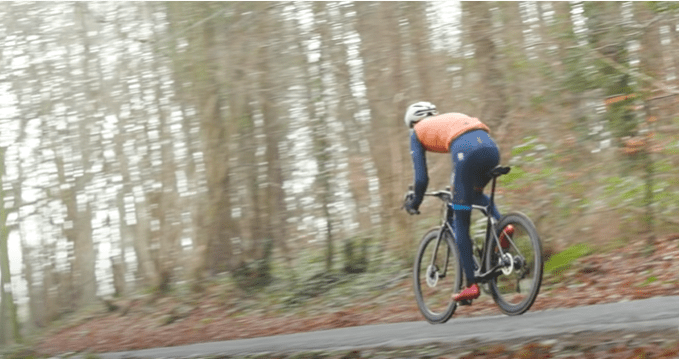

When cycling, it’s important to be prepared for punctures by carrying a spare inner tube, either new or used but without any punctures, to avoid the need for repairs on the road. Additionally, carrying small tools to remove the tire and apply patches is recommended. Being well equipped can prevent the need to walk home.
To extend the lifespan of your tire, avoid overloading it and slightly deflate it after each ride. This will prevent the tire from always being at maximum pressure, which can cause it to wear out faster. To further extend the lifespan of your tire, it’s ideal to suspend your bike to avoid placing constant and excessive pressure on the inner tube.
10 BEST ROAD BIKE TYRES TO AVOID PUNCTURES
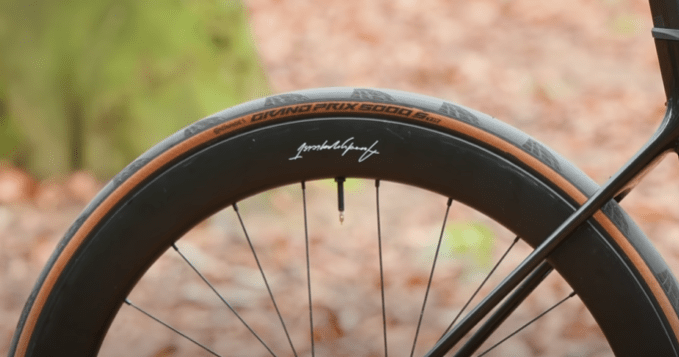

Continental, a German brand with over a century of experience, is a renowned producer of bicycle tires. The company collaborates with professional cyclists to create tires that meet the highest standards.
The Continental bike tires listed below are well-regarded and commonly used as benchmark tires in road tests.
The GP 5000 has a relatively flexible casing (although it can be tricky to assemble) and features wear indicators that enable quick checks to ensure sufficient rubber remains for safe operation.


According to the manufacturer’s website, this tire is designed for racing and training. It features a Vectran layer that enhances puncture resistance and is coated with BlackChili, which is said to reduce rolling resistance, enhance endurance, and improve grip on wet surfaces.
Unlike some other brands, the GP 5000 has a specific mounting direction, so it’s essential to follow it carefully. An arrow on the tire indicates the direction in which it should rotate.
Continental describes the GP 4-Seasons as a versatile tire suitable for long rides (GranTour), training, and even races. For pure competition use, however, it’s better to opt for the GP 4000 S II.
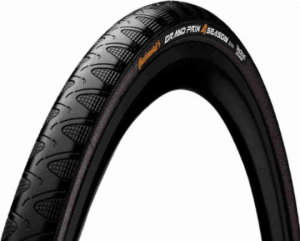

The 4-Seasons is usable in all weather conditions and boasts a Vectran double layer for superior puncture protection. Professional cyclists use the DuraSkin coating on this tire in events like Paris-Roubaix because of its exceptional durability.
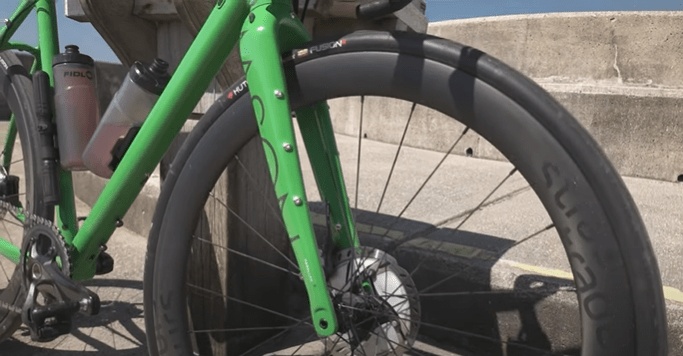

Hutchinson is a century-old French brand that has been producing bike tires for over a century. Their products are tested by professionals and have accompanied Tour de France winners several times.
The brand offers some of its best tires in a tubeless mounting option, which is becoming increasingly popular among cyclists.
Introduced in 2017, this tire replaced the Fusion 3 with a new HDF> 5 compound that increases durability, speed, and endurance compared to the previous model. The Fusion 5 is available in several models, including the Performance, Galactik (for competition with a shorter lifespan), and 4seasons (for all-weather use with enhanced durability).
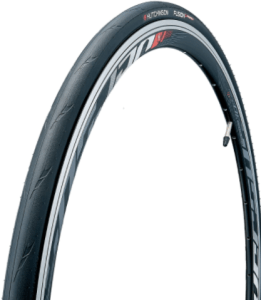

The Performance model is the most well-rounded and balanced in terms of performance, weight, puncture resistance, comfort, grip, and longevity.
The Intensive 2 is Hutchinson’s most puncture-resistant and long-lasting tire. It features a bi-rubber construction, making it a little heavier but also increasing its resistance, lifespan, and grip.
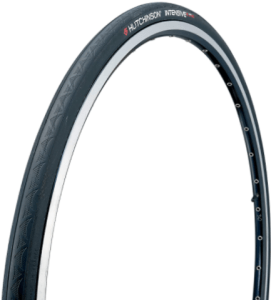

This tire is perfect for training with the brand, and there is even a reinforced model released this year for even greater endurance and puncture resistance.
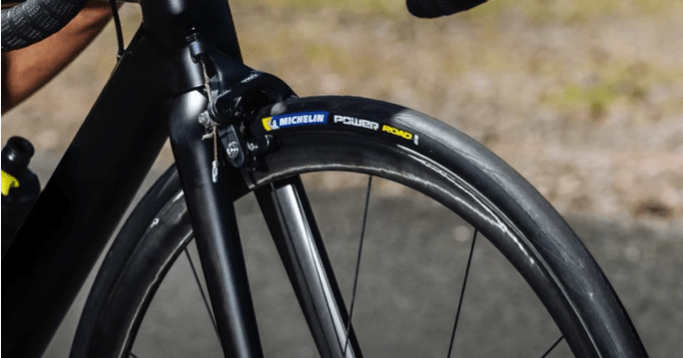

Michelin is a popular French manufacturer that produces a wide range of road bicycle tires, along with tires for cars and motorcycles.
The Michelin Power Endurance is the successor to the Michelin Pro 4 Endurance. This new tire boasts a reduction in rolling resistance by 8.6 watts compared to the Pro 4 and an increase in puncture resistance by 20%, according to the manufacturer’s tests. Additionally, they come with wear indicators, making it easy to check the condition of the tire.
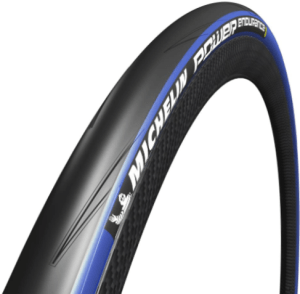

The Michelin Power range includes tires for racing and all-season use, as well as a variety of colors to match your bike frame.
Released in 2017 for training, the Lithion 3 replaces the Lithion 2 model introduced in 2015. This tire is an excellent compromise that provides remarkable durability at a reasonable price of less than $25. It’s built for training and endurance with features that make it perfect for long rides in any weather. However, the assembly can be a bit challenging due to its rigidity.
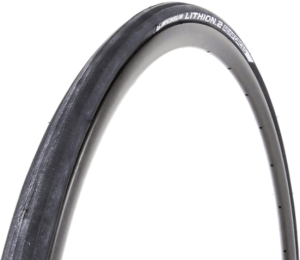

To make it easier to understand the differences between Michelin’s range of tires, refer to this table that summarizes the distinctions among them.
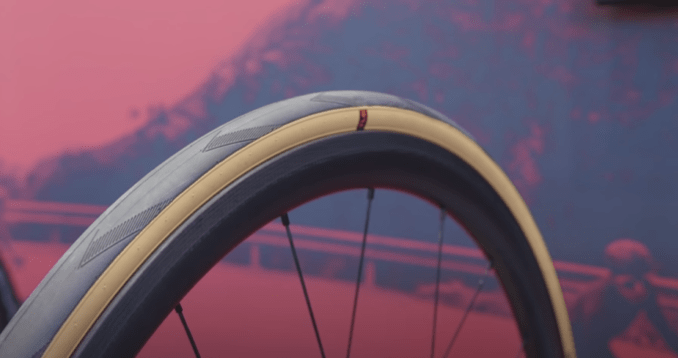

Schwalbe is a German brand that has been producing bicycle tires for over 70 years. They have a large range of products for all types of cyclists, from beginners to competitive racers, as well as for electric bikes.
The Schwalbe Pro One is their top-of-the-range tire, released in 2020. It’s designed for competition and weighs only 234 grams (for 25C). It offers excellent endurance and grip, allowing you to climb hills effortlessly. The Pro One is 10% more efficient than the One, which is another popular Schwalbe tire.
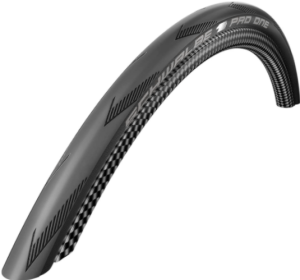

This tire is made of an innovative triple compound that reduces performance loss and increases grip on wet surfaces. Schwalbe’s V-Guard puncture protection technology gives it a score of 5 out of 7 on their puncture resistance scale. At under $60 per tire, it offers excellent quality, performance, and value for money.
The Marathon Plus is a popular tire for cyclists who ride a lot in urban areas. It’s well-known for its puncture-resistant properties, and it’s Schwalbe’s best-selling road bike tire. The Marathon Plus is about twice as heavy as a regular tire because it has additional material to strengthen the carcass. Its SmartGuard protective layer is 5mm thick, which makes it extremely resistant to punctures. On Schwalbe’s resistance protocol scale, it scores 7 out of 7, which is the maximum score.
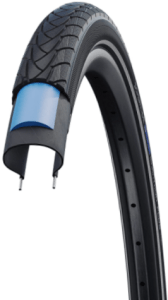

The Marathon Plus tire is designed to withstand rolling at low pressure, making it ideal for urban cycling. Schwalbe has created an impressive demo video that showcases the tire’s durability and popularity with urban riders and hikers who can now cycle worry-free.
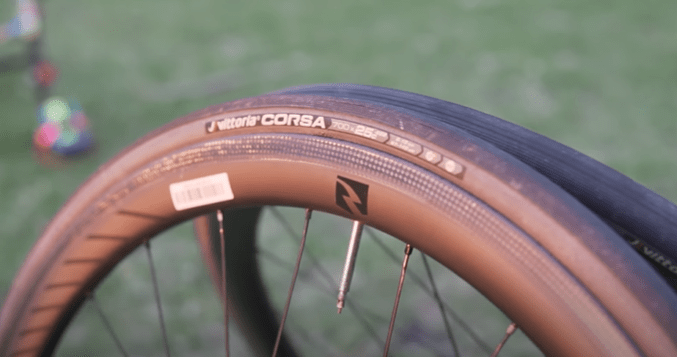

Vittoria is a popular Italian tire manufacturer that produces high-quality road, mountain, and track bike tires. The brand caters to both professional racers and individual cyclists by offering a wide range of tires for different needs.
Vittoria’s standout feature is the use of graphene, which is a component that enhances tire grip and durability.
Vittoria Corsa is the brand’s flagship model designed for speed and reliability. The latest version, Corsa 2.0, features four layers of graphene for low rolling resistance and improved endurance. It’s a proven winner, having won three Tours de France.


The Corsa comes in sizes ranging from 23C to 32C to fit various bike types.
For long rides and daily cycling, the Vittoria Rubino Pro is a great option. It’s a versatile tire suitable for both training and competition, making it an excellent choice for everyday use. The Rubino Pro features an anti-puncture coating to reduce punctures caused by debris on the road.
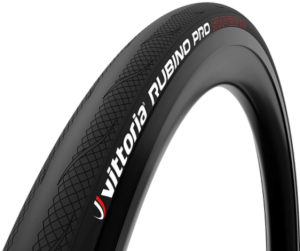

Although a bit tricky to assemble, the Rubino Pro is flexible and weighs only 225 grams with a TPI of 150. If you have to ride in harsh weather, you may consider the Rubino Pro Control.
After 1500 km of riding, the Rubino Pro shows only minor cuts from debris and road conditions. It seems highly durable, and the guide will be updated after several thousand kilometers.
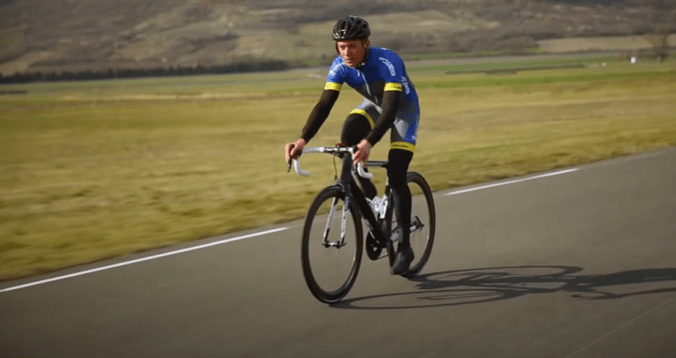

If you have a preference for a particular brand, this guide will suggest 2 models per manufacturer, making it easier for you to choose.
However, if you are indifferent to the brand, it is recommended to choose based on the price.
Testing different tires and brands is the most effective way to find the best one for you. Keep in mind that tires have a long lifespan nowadays, and they can last for years if you do not ride regularly.
It is important to select road bike tires based on your geographical location to avoid slipping on wet roads due to tires that only perform well on dry roads.
After years of experience, it is safe to say that there are no bad tires, only models that are more or less suitable for your specific usage.
